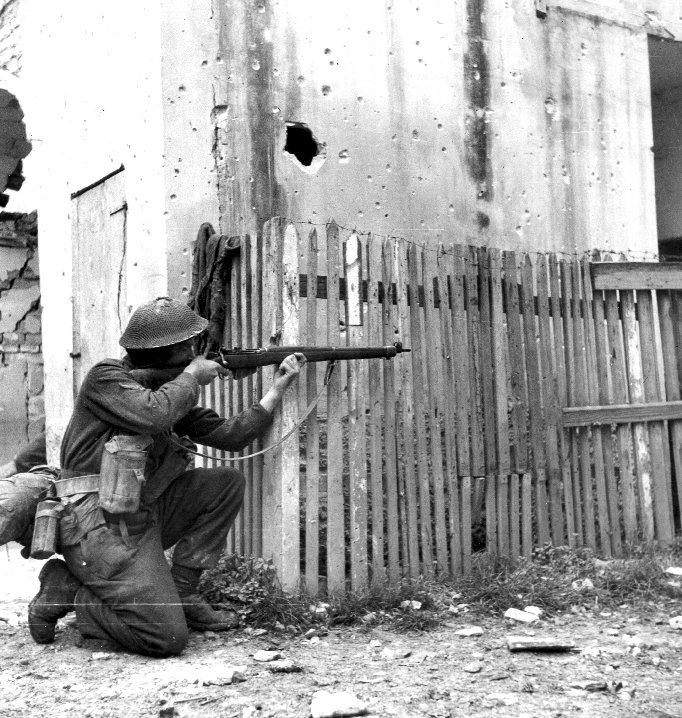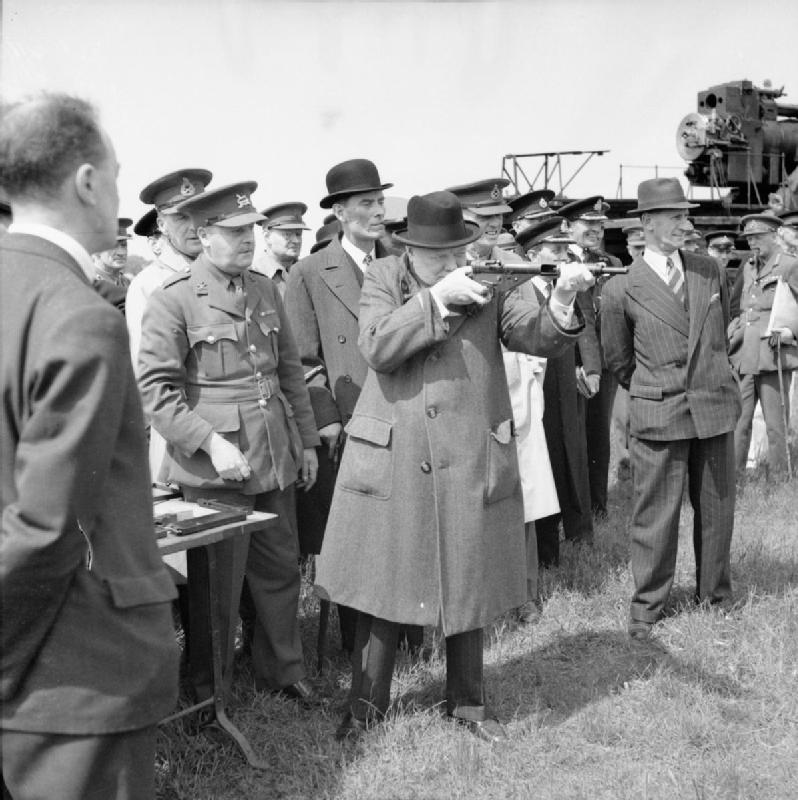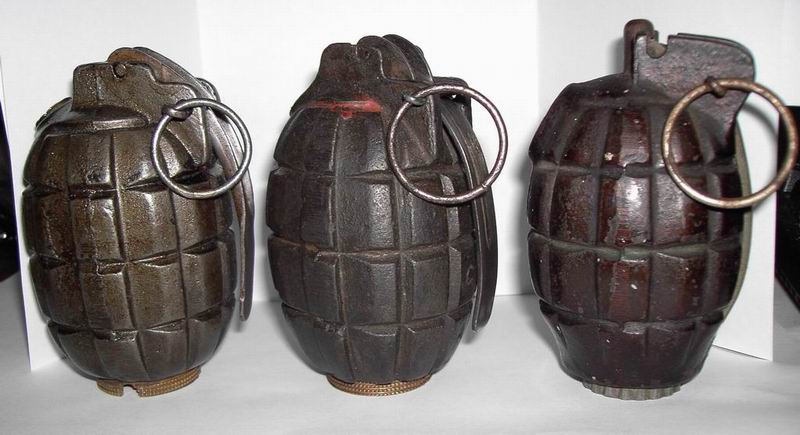British Empire and Commonwealth
Lee-Enfield
The Lee-Enfield was the main firearm used by the British Empire and Commonwealth, not just during World War II, but for the first half of the 20th century. It was a bolt-action, magazine-fed, repeating rifle that was first adopted in 1895 until 1957. The weapon is still in the service of some armed forces in Commonwealth of Nations, in particular with the Bangladesh Police, making it the longest-serving military bolt-action rifle still in official service.
Canadian rifleman during Battle of Ortona, December 1943. National Archives of Canada.

Bren Light Machine Gun
The Bren Light Machine Gun was another staple firearm for the armies of the British Empire and Commonwealth. It was issued on a scale of one rifle per section, and typically required two men to operate. The weapon could also be fired from the hip, which was a tactic employed by Australian troops. A Victoria Cross was awarded to Private Bruce Kingsbury who used that tactic at Isurava, New Guinea in 1942, during the Australians’ fighting retreat from Kokoda. The Bren was capable of firing 500–520 rounds/min, with an effective firing range of 600 yds. Every soldier was trained to be able to use the weapon in an emergency.
Bren gunner of the Royal Scots in the Netherlands, 1944. By Sergeant Laing, No 5 Army Film & Photographic Unit

Sten
The Sten was part of a family of submachine guns used throughout World War II and the Korean War. It had a simple design, which meant the gun had low production costs, and soon became a favorite for resistance groups. There were over four-million Stens made in the 1940s. However, the gun itself, especially the Mark II version, was unpopular with some front-line troops because of its poor reliability and strange appearance. It was nicknamed “Plumber’s Nightmare”, or ‘Stench Gun”.
Winston Churchill with a Sten Mk II in Shoeburyness on June 13th 1941. By Horton (Capt), War Office official photographer

Mills Bomb
The first modern fragmentation grenade used by the British Army, over 70 million Mills bombs were produced until the end of their run in the 1980s. Someone with a good throwing arm could launch the grenade a distance of 15 meters; but troops were advised that the grenade had a danger area of around 100 yds. The Mills bomb first had a seven-second fuse, but during the Battle of France, this proved too long, allowing enemies to toss the grenade back, so was reduced to four seconds.
Mills bombs. From left to right: N°5, N°23, N°36. I, Jean-Louis Dubois [GFDL]

Fairbairn-Sykes Fighting Knife
The Fairbairn-Sykes fighting knife is a double-edged fighting knife that resembled a dagger or poignard with a foil grip. It was developed based on concepts of blades that the Shanghai Municipal Police in China used. The knife was made famous during World War II because of its use by British Commandos, the Airborne Forces, the SAS and many other units, especially during the Normandy Landings. Even today, the F-S knife is still used for hand-to-hand combat situations around the world.
Fairbairn-Sykes Fighting Knife. Greynurse at English Wikipedia
